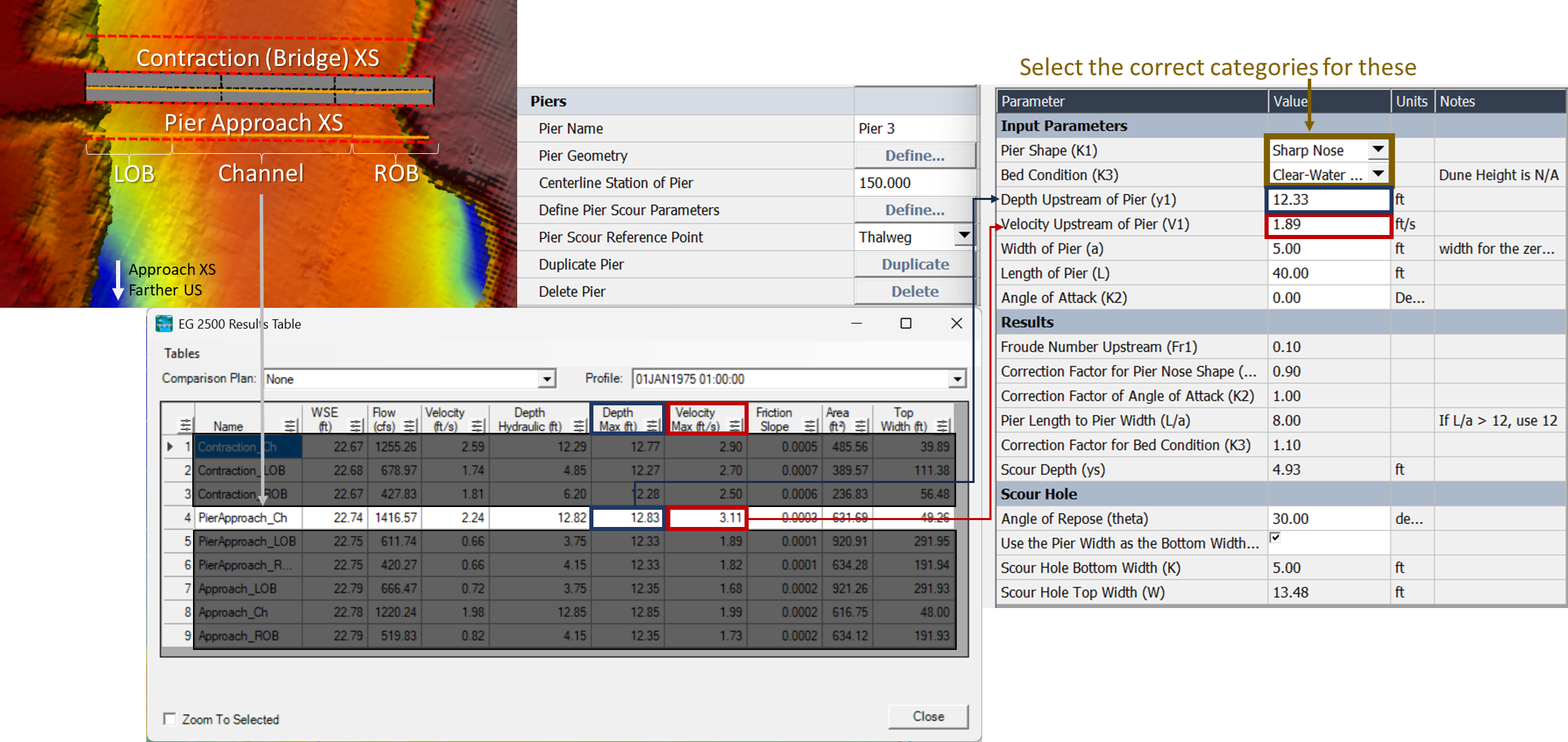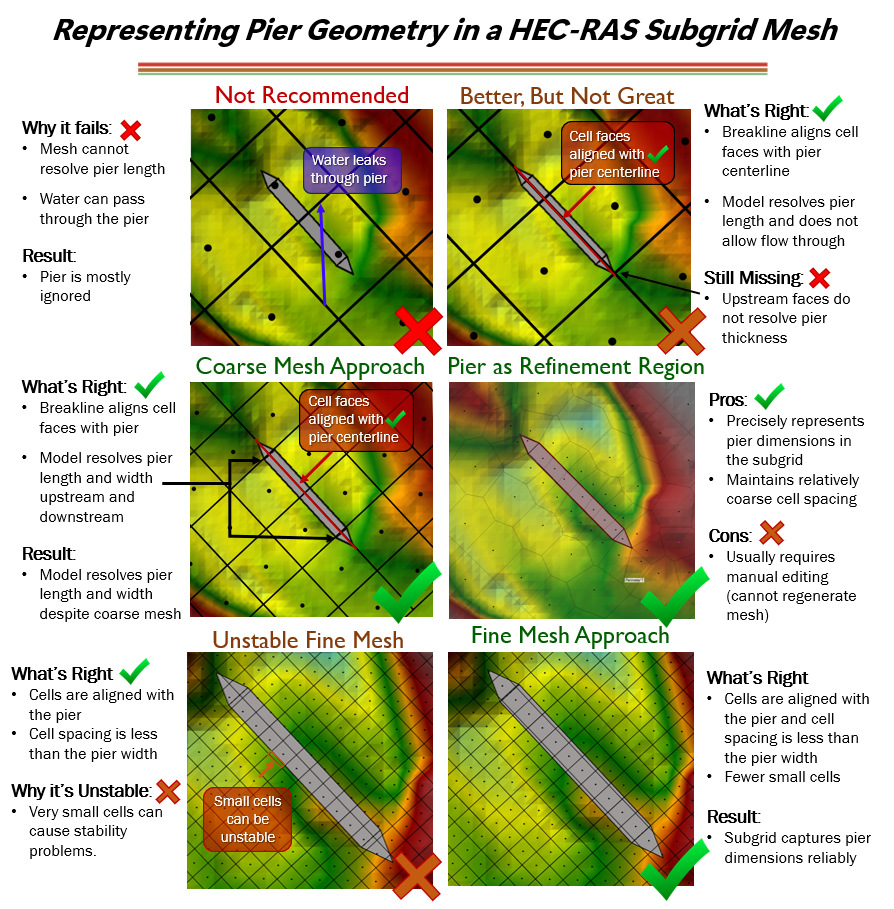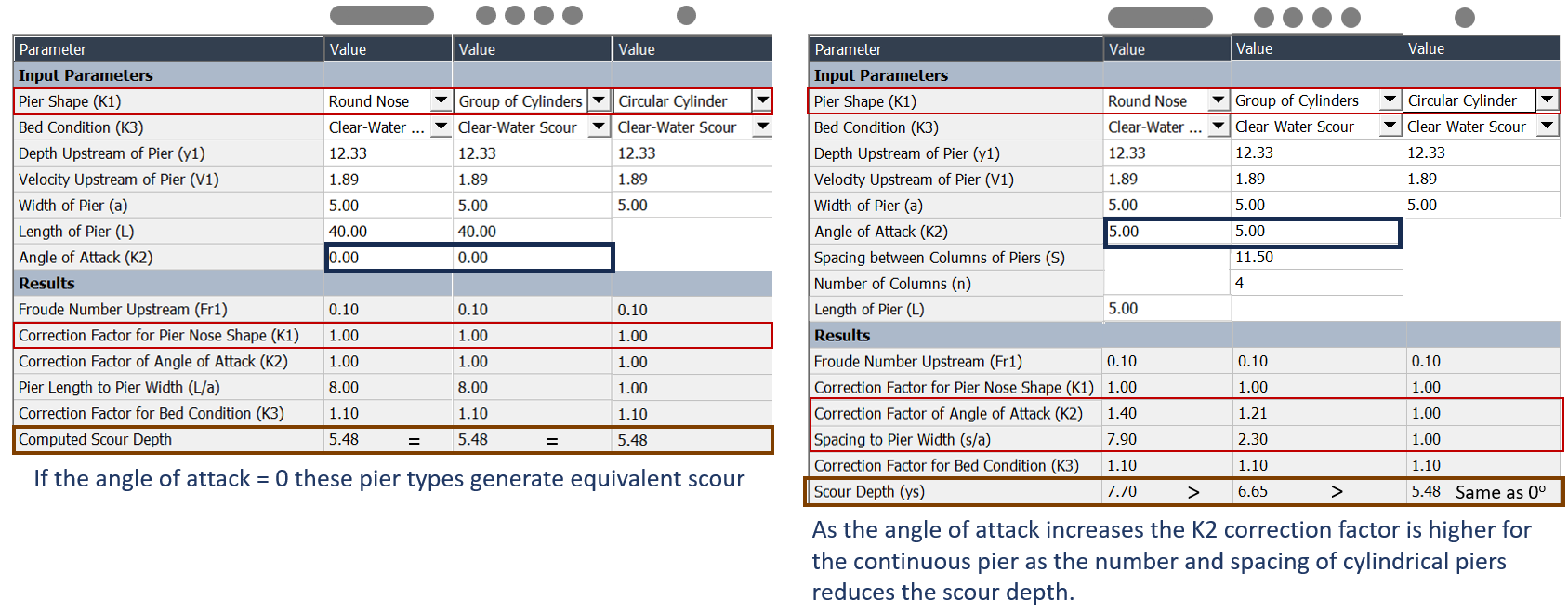Download PDF
Download page Extracting Pier Scour Variables from 2D HEC-RAS.
Extracting Pier Scour Variables from 2D HEC-RAS
To enter the pier scour data in the Hydraulic Toolbox press the Define button in the Define Pier Scour Parameters row of each pier.
The HEC-RAS Bridge Scour tool will automatically export the pier length, width, and angle of attack.
The three pier geometry factors in the pier scour editor come from three different locations in the 
For information on how to import the rest of the pier geometry see the section on Copying Your Bridge Data into the FHWA Toolbox in this tutorial.
Selecting Hydraulic Variables for Pier Scour in the Channel
The HEC-18 Pier Scour analysis requires two hydraulic parameters Depth (y1) and Velocity (V1) "Upstream" of the pier.
This can be confusing because there are two cross sections (reference lines) upstream of the pier.
These are from the Pier Approach XS placed one pier length upstream of the Contraction (Bridge) cross section, NOT the Approach Cross Section in the fully expanded flow field.
There are two approaches to pier scour "Thalweg" and "Local."
FHWA recommends "Thalweg" (Max) for design.
Therefore, the Depth (y1) and Velocity (V1) upstream of the Pier should represent the maximum scour condition across the channel reference line.
Note: The maximum scour condition is estimated with the unit discharge (V*D*W) to identify the critical V and D at a shared cell, not the highest V and D independently.
(Note: The beta version of the toolbox does not do this unit discharge analysis but returns the local maxes. We will update for the final release).

Why use the maximum depth and velocity
The thalweg of the channel is usually the critical pier scour condition (Dmax*Vmax).
But the cross section will not necessarily maintain its shape during a scour event.
The thalweg or the critical scour condition can migrate laterally, especially during bridge scour.
FHWA recommends using the maximum, cross section scour condition for each pier based on the assumption that the thalweg or critical condition could migrate through any or all of the channel piers.
See discussion below for how this applies to floodplain piers.
The HEC-RAS bridge scour export tool automatically writes the local, channel Dmax and Vmax for all piers.
2. Pier Scour Parameters for Floodplain
Similar principles of channel migration apply to the floodplain piers. If the channel could migrate into the floodplain piers, then use the max channel hydraulics in the floodplain too. But if the channel is not likely to migrate, then the maximum hydraulics from the overbank pier approach XS are appropriate.
In the example below, there are three piers (red) that are clearly associated with the channel.
They used the channel hydraulics from the pier approach XS.
Then, a geomorphic assessment found it unlikely that the channel would migrate into the three piers on the right (blue).
They used the hydraulics from the right overbank section of the pier approach cross section.
But the river channel could shift into the footprint of the other two piers (orange - dotted).
Therefore, these piers use the channel hydraulics even though they are officially in the overbanks.
HEC-RAS Export Tool (Beta) assigns channel hydraulics to ALL Piers
The beta version of the tool associates the channel variables to all piers.
Use this display to identify the overbank hydraulics for the pier approach XS and associate them with the appropriate piers.



The HEC-RAS geometry editor assumes that piers are continuous along the entire bridge deck, so HEC-RAS will export the bridge width as the pier length.
You can define cylindrical piers in the terrain with mods, but the geometry will export a continuous pier to the Hydraulic Toolbox File.
You can identify the pier as a cylinder or cylinder group.
If flow strikes the first pier directly (with no angle of attack) the toolbox will compute no difference between a single cylinder, a row of cylinders, or a continuous round nosed pier (below left).
But as the angle of attack increases, the continuous pier and the row of cylinders both increase the predicted scour depth (the single cylinder is unaffected) but the row the effect of the angle of attack (propagated through the K2 factor) is muted by the flow allowed through the piers.